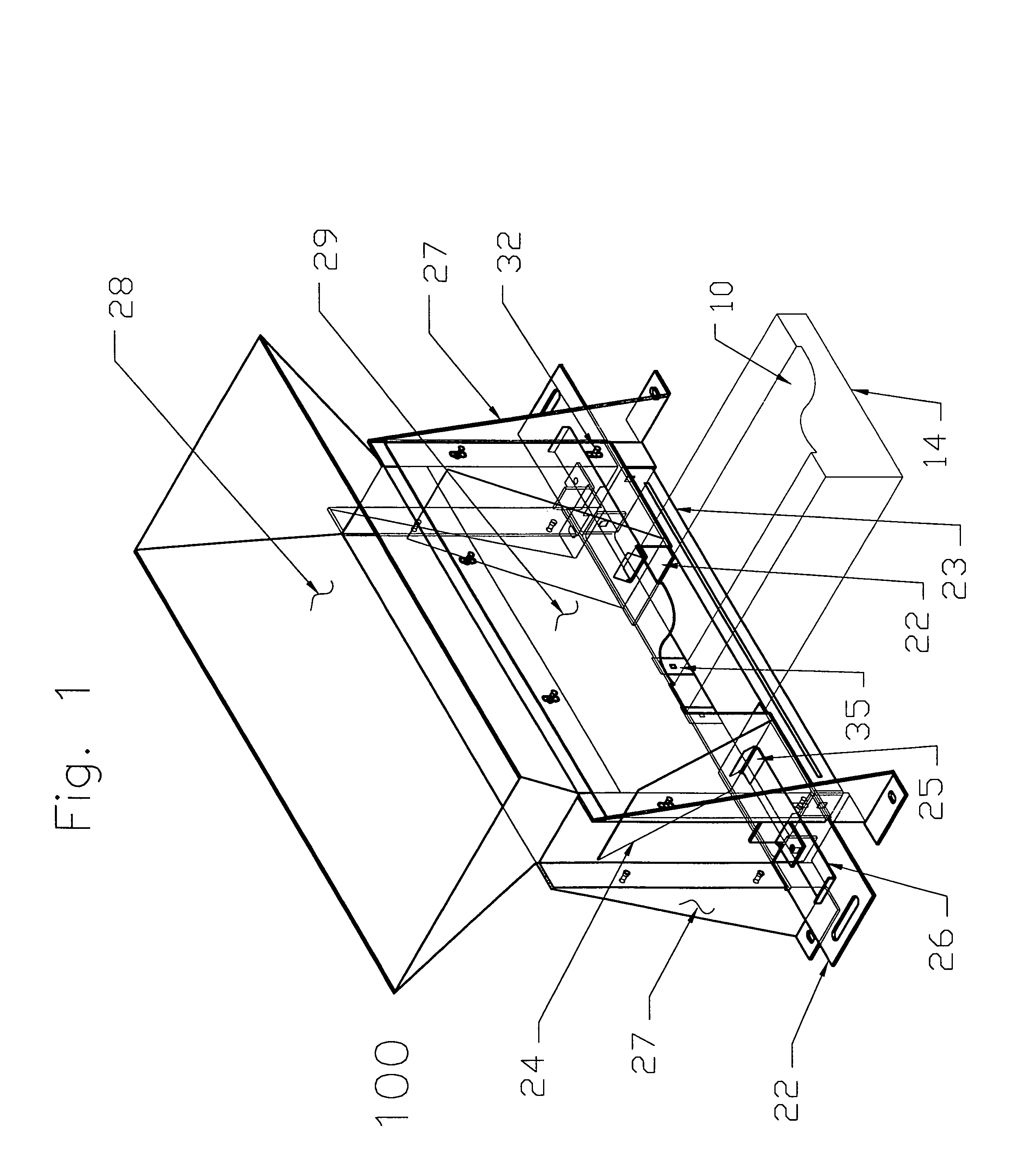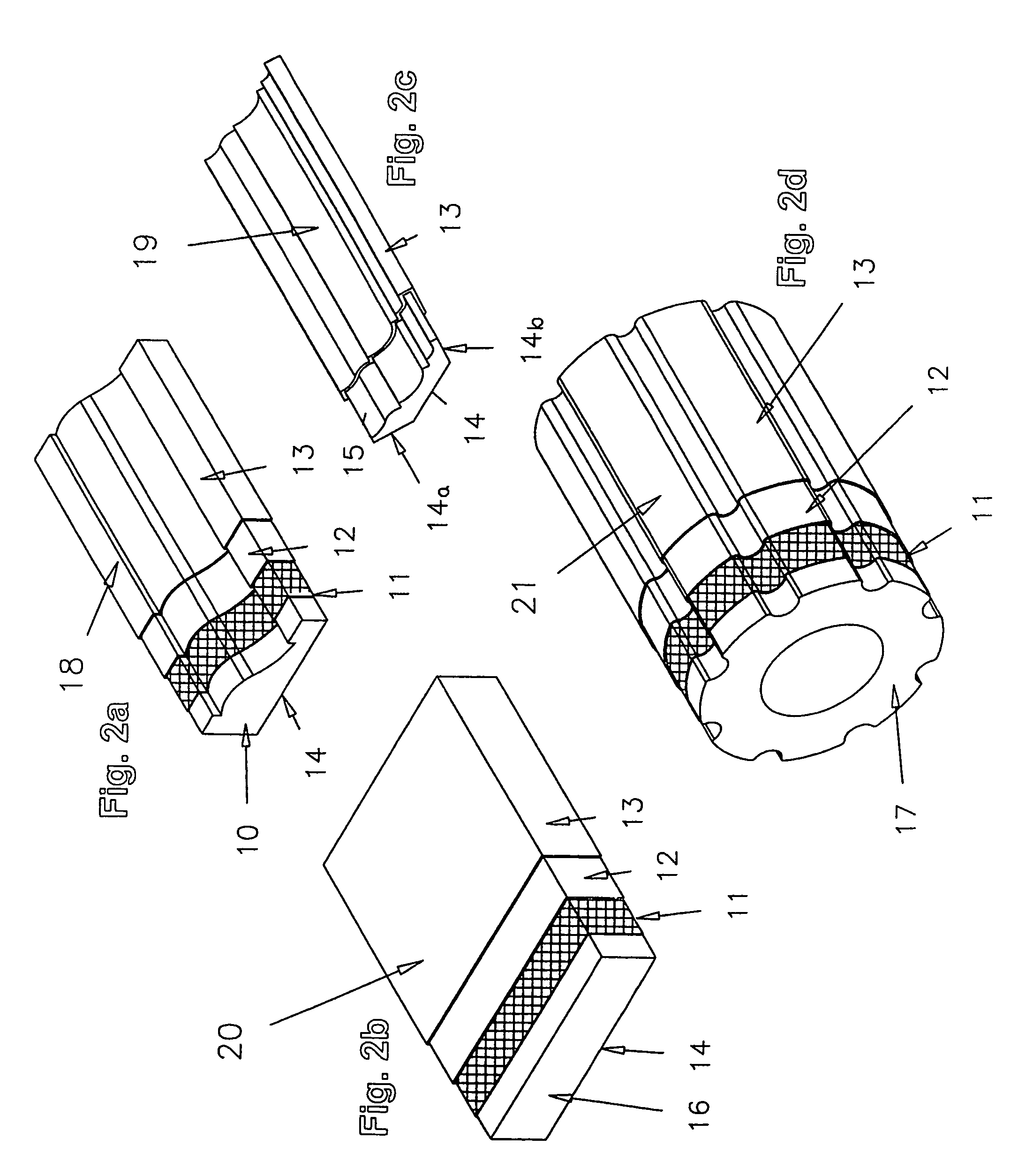Coating chamber and templates to produce decorative mouldings
a technology of decorative mouldings and templates, applied in the construction industry, can solve the problems of inability to rationalize standards, inability to provide templates that are adjustable, and high cost of methods
- Summary
- Abstract
- Description
- Claims
- Application Information
AI Technical Summary
Benefits of technology
Problems solved by technology
Method used
Image
Examples
Embodiment Construction
[0046]Referring to FIG. 1, there is illustrated apparatus 100 of the present invention in which a decorative moulding is coated. The workpiece comprises a core 10 (see FIG. 2) having coated surface 13 (see FIG. 2) which is profiled in cross-section, but elongated and consistent along its entire length. A mesh 11 (see FIG. 2) covers the surface 13 (see FIG. 2) before coating the workpiece and may overlap the sides to fold under on the surface 14 (see FIG. 2). The mesh acts as reinforcement to the workpiece but may be absent in mesh-less systems or advanced coatings with an inherent fibrous matrix.
[0047]The workpiece 18 is a decorative moulding designed to be mounted on an exterior wall by cementing it in place via bottom surface 14.
[0048]Workpiece 19 is an interior inside corner moulding and is attached by cementing surfaces 14a and 14b to a wall section.
[0049]Workpiece 20 is a wall panel.
[0050]Workpiece 21 is a column, which is produced by cementing together two halves after being c...
PUM
| Property | Measurement | Unit |
|---|---|---|
| sizes | aaaaa | aaaaa |
| surface profile | aaaaa | aaaaa |
| movement | aaaaa | aaaaa |
Abstract
Description
Claims
Application Information
 Login to View More
Login to View More - R&D
- Intellectual Property
- Life Sciences
- Materials
- Tech Scout
- Unparalleled Data Quality
- Higher Quality Content
- 60% Fewer Hallucinations
Browse by: Latest US Patents, China's latest patents, Technical Efficacy Thesaurus, Application Domain, Technology Topic, Popular Technical Reports.
© 2025 PatSnap. All rights reserved.Legal|Privacy policy|Modern Slavery Act Transparency Statement|Sitemap|About US| Contact US: help@patsnap.com



